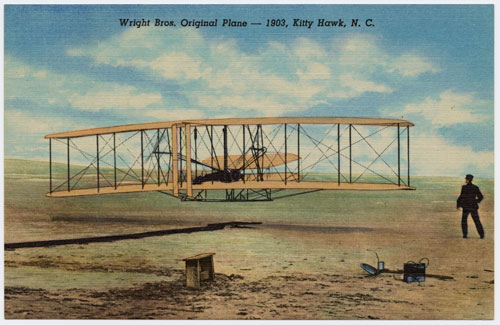License plates in North Carolina may be forced to undergo redesign if new research gains ground suggesting that the Wright Brothers weren’t the first in flight. An article published last week in Jane’s All the World’s Aircraft advances a claim that Gustave Whitehead, a German immigrant to Connecticut, made the first powered and controlled flight on August 14, 1901, two years prior to Orville Wright’s taking to the air at Kitty Hawk. According to Jane’s, Whitehead built an aircraft with two acetylene-fueled engines. The Condor, as his plane was named, had a 10 horsepower motor for the wheels and a 20 horsepower engine as the main source of forward flight. (unfortunately the full article is behind a paywall):
In the early hours of 14 August 1901, the Condor propelled itself along the darkened streets of Bridgeport, Connecticut, with Whitehead, his staff and an invited guest in attendance. In the still air of dawn, the Condor’s wings were unfolded and it took off from open land at Fairfield, 15 miles from the city, and performed two demonstration sorties. The second was estimated as having covered 1 1/2 miles at a height of 50 feet, during which slight turns in both directions were demonstrated.
Historians have long known about an account of Whitehead’s flight in the Bridgeport Herald. But photographic evidence didn’t exist until recently, when a Bavarian amateur historian discovered a photograph of a 1906 exhibition on flight that included a picture of what appears to be Whitehead’s Condor in flight.
A top official at the Smithsonian National Air and Space Museum says he’ll wait for further evidence before changing his–and the institution’s–stance that Orville and Wilbur Wright are responsible for the first powered flight.
Perhaps Bridgeport mayor Bill Finch is showing the true skills of a politician. He told NPR that Connecticut’s license plate could read “Firster in Flight.” That seems to leave room for “First in Flight” to remain on N.C. plates.

